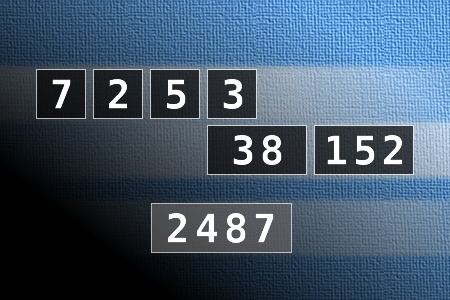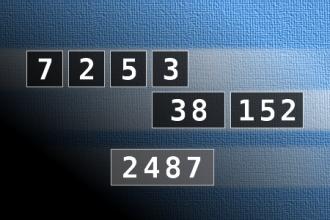Calculate the number 2487
NUMBERMANIA: Calculate the number 2487 using numbers [7, 2, 5, 3, 38, 152] and basic arithmetic operations (+, -, *, /). Each of the numbers can be used only once.
An old man was sitting on his ...
The driver, pulled over, jumped out and ran back to see what he had hit. Seeing the flattened jackrabbit, he retrieved a spray can from the truck, and sprayed it on the mess. Waiting a few minutes, he shook the can and sprayed more on. The flattened mass quivered, and the driver sprayed yet more on. The mass quivered more, pulsing as well. The driver emptied the can, and the mass quivered, pulsed and reassembled itself into the jackrabbit. The old man watched, stunned. The driver tossed the empty can into a clump of roadside weeds and drove off.
The jackrabbit shook itself, turned to the old man and waved, then hopped a few steps. It stopped, turned back to the old man and waved again.. hopped a few more steps, stopped, turned and waved. This repeated every few hops until the jackrabbit disappeared into the field across the road.
Curious, the old man slowly arose, and hobbled toward where the driver had tossed the can, poking through the weeds with his cane until he found it. He picked up the can and read the label... "Hare Restorer With Permanent Wave."

